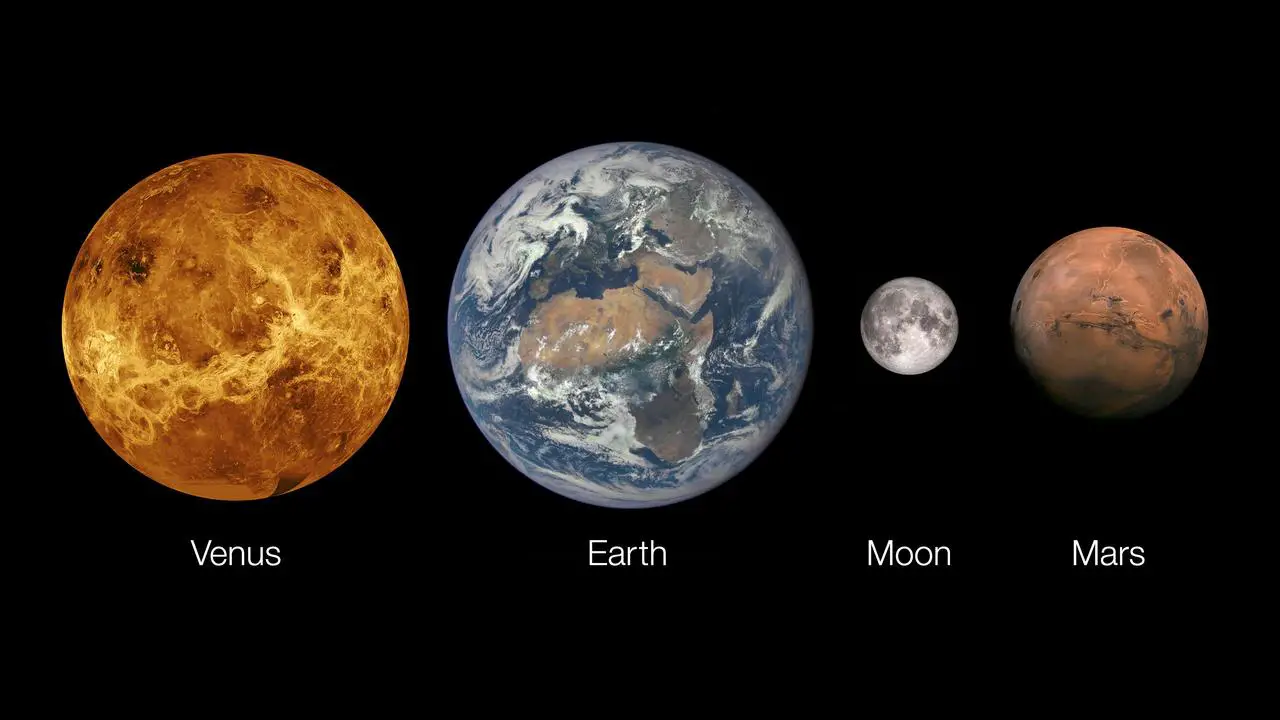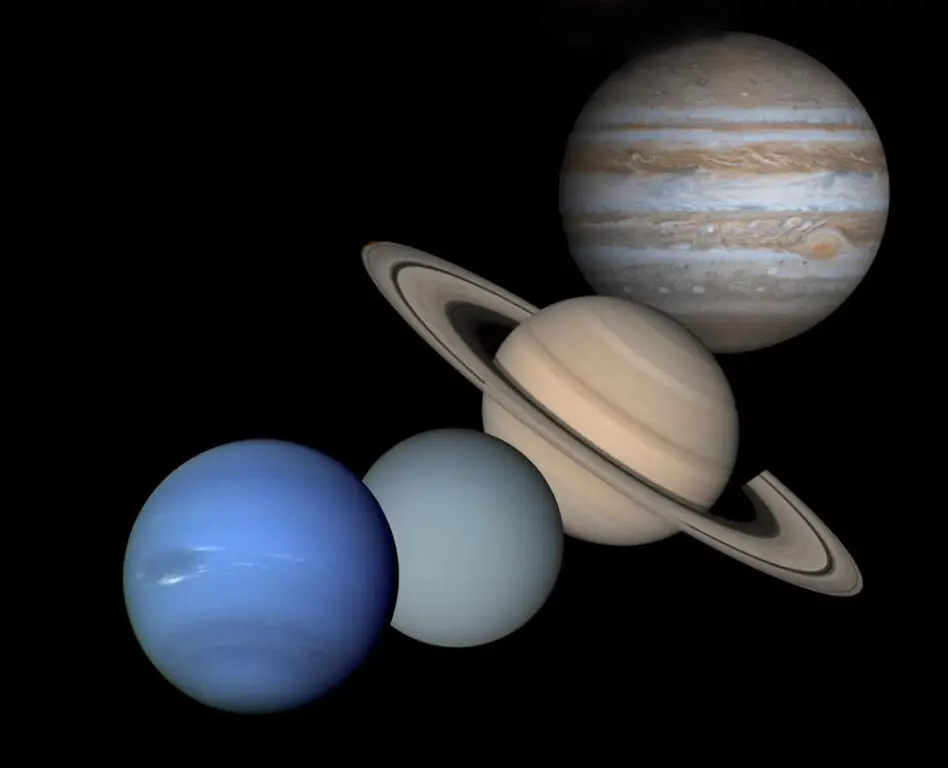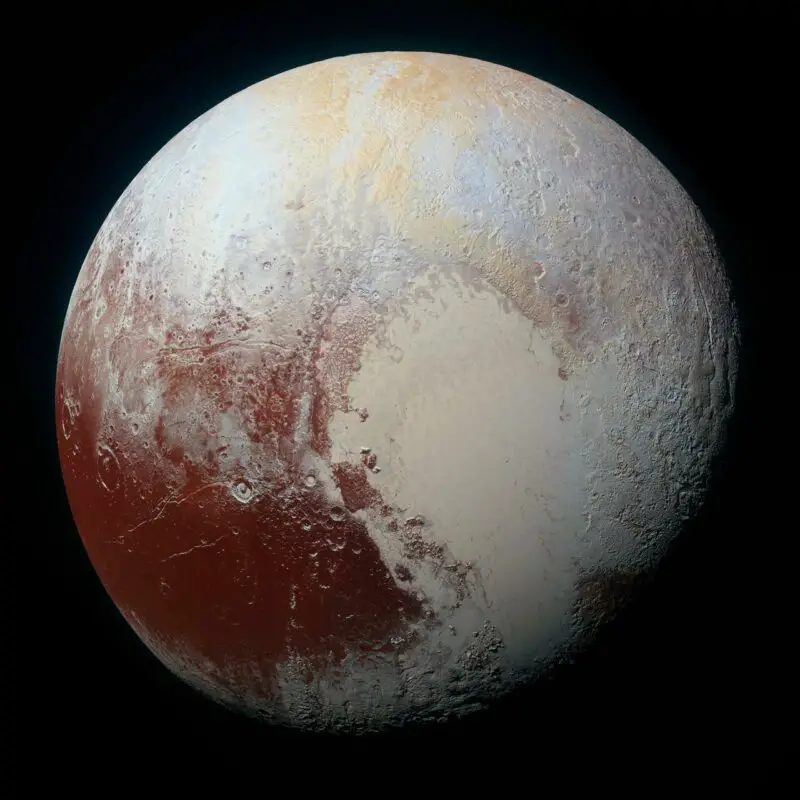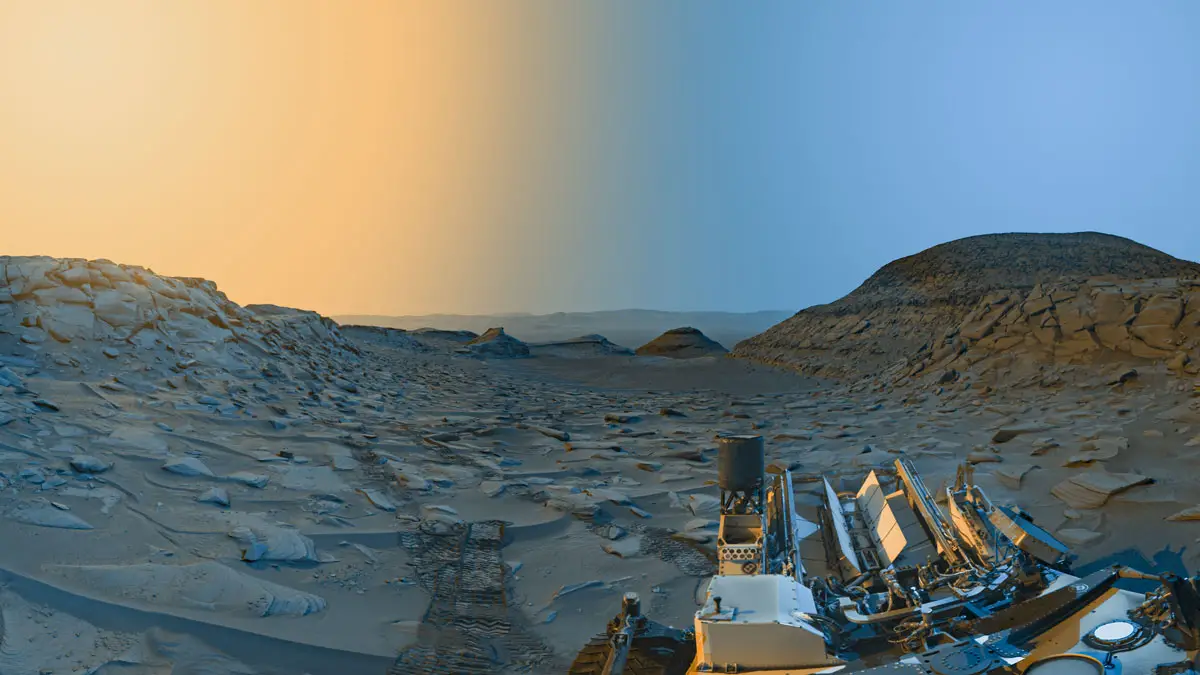Understanding the solar system’s architecture is like examining a cosmic lineup, with each planet playing a unique role in the collective ensemble. As the central star, the Sun is the grand orchestrator, exerting its gravitational pull to govern the movements of all celestial bodies within its domain.
The planets in order from the Sun are as follows:
- Mercury
- Venus
- Earth
- Mars
- Jupiter
- Saturn
- Uranus
- Neptune

Table of Contents
Starting with Mercury, the solar system reveals itself in a procession of increasing distance from the Sun. Each planet, from the scorched surface of Venus to the stormy atmosphere of Jupiter, and onwards to the icy realm of Neptune, presents a history and a set of characteristics that distinguish it from its neighbors. My exploration of these planets will shed light on their placement and uniqueness, drawing a clear map of our corner of the universe.
Earth sits comfortably in the habitable zone where life as we know it is possible, a peculiar jewel among the planets. Moving past our home planet, the solar system unfolds into the outer realm where gas giants dwarf their terrestrial counterparts. The dance of these planetary giants against the backdrop of space is a silent yet captivating spectacle, a reminder of the cosmic order that has fascinated humans throughout our history.
Solar System Overview
The Solar System is a complex system with the Sun at its center. It includes eight planets, with Mercury being the closest to the Sun, followed by Venus, Earth, and Mars. These inner planets are rocky and terrestrial. Beyond Mars, Jupiter and Saturn fall under the category of gas giants, while Uranus and Neptune are known as ice giants due to their composition.
Pluto is classified not as a planet but as a dwarf planet, situated in the Kuiper Belt — a realm of icy bodies beyond Neptune. The Kuiper Belt, along with the distant Oort Cloud, is home to many comets that occasionally visit the inner Solar System. Contrary to the planets, which orbit the Sun in relatively circular paths, the comets have long, elliptical orbits.
The Solar System also contains an abundance of asteroids, primarily in the asteroid belt between Mars and Jupiter. These rocky fragments vary in size and shape and represent remnants from the early Solar System that never formed into planets.
The Solar System is just one of many star systems in the Milky Way galaxy, which contains billions of stars and their accompanying planetary systems. It’s my belief that understanding our own Solar System gives us crucial insights into the dynamics of other star systems in the cosmos.
Planetary Formation and Characteristics
When I examine the solar system, I see a diverse array of planets, each with its unique makeup and origins. Planet formation begins within a protoplanetary disk surrounding a young star. Through a process called accretion, particles collide and stick together, forming larger bodies over millions of years.
The inner solar system is home to the terrestrial planets: Mercury, Venus, Earth, and Mars. They are characterized by their rocky surfaces and are primarily composed of silicates and metals. These planets have relatively small diameters and mass compared to their gas and ice giant counterparts. Their atmospheres, where present, are often thin and composed of elements such as carbon dioxide, nitrogen, and in Earth’s case, oxygen.
Beyond the asteroid belt, the gas giants, Jupiter and Saturn, reign supreme. Their massive size and significant mass are largely due to their thick atmospheres rich in hydrogen and helium. Beneath the atmospheres, they may have rocky or icy cores.
Farther out lie the ice giants, Uranus and Neptune, which have mantles of water, ammonia, and methane ices, giving them a distinct composition from gas giants. They have an atmosphere that contains hydrogen, helium, and methane, the latter of which gives Neptune its striking blue color.
Among these celestial bodies are the dwarf planets, like Pluto. These smaller entities have varying characteristics but are recognized by their inability to clear their orbits of other debris.
| Type | Composition | Atmosphere | Diameter | Mass |
|---|---|---|---|---|
| Terrestrial | Rock, metals | Thin, varies | Small | Smaller |
| Gas Giants | Hydrogen, helium | Thick H/He | Large | Massive |
| Ice Giants | Water, ammonia, methane ices | H/He with methane | Moderate | Moderate |
| Dwarf | Diverse | Varied | Small | Smaller |
In summary, each class of planet — the terrestrial planets, gas giants, ice giants, and dwarf planets — displays a unique set of characteristics that reflects their position in the solar system and the conditions present during their formation.
The Inner Planets

The inner planets of our solar system, Mercury, Venus, Earth, and Mars, are terrestrial planets. They are characterized by their rocky composition and proximity to the Sun.
Mercury
Mercury’s composition is primarily of rock and metal, making it the smallest terrestrial planet. Its surface experiences extreme temperatures due to its lack of atmosphere, swinging between scorching day heat and freezing night cold.
- Composition: Rock, metal
- Surface: Cratered
- Atmosphere: Negligible
Venus
Venus boasts an atmosphere thick with clouds of sulfuric acid. Its surface, hidden beneath this opaque veil, is mountainous and has been shaped by volcanic activity.
- Composition: Rock
- Surface: Volcanoes, valleys
- Atmosphere: Dense, CO2-rich
Earth
Earth is unique among its neighbors for having a rich and life-supporting atmosphere. Its surface is covered in vast oceans and land dotted with mountains, valleys, and living organisms.
- Composition: Rock, iron core
- Surface: Oceans, continents
- Atmosphere: Nitrogen, Oxygen
Mars
Mars, known for its red hue due to iron oxide, possesses geological features such as the largest volcano and canyon in the solar system. It retains a thin atmosphere, primarily composed of carbon dioxide.
- Composition: Rock, iron oxide
- Surface: Deserts, polar ice caps
- Atmosphere: Thin, CO2-rich
Earth’s Moon and Satellites

Earth’s natural satellite, known as the Moon, is its closest celestial neighbor. Its presence stabilizes the planet’s tilt and moderates the climate. With a diameter of 3,474.8 kilometers, the Moon takes about 27.3 days to orbit Earth, showing the same side due to synchronous rotation.
Other Planetary Moons:
In our solar system, moons orbit other planets too. For example, Mars has two small moons:
- Phobos: Approximately 22.4 kilometers in diameter, Phobos is the larger Martian moon. Close to its planet, it orbits Mars in just over 7 hours.
- Deimos: This moon is smaller with a diameter of about 12.4 kilometers. It takes roughly 30 hours to complete an orbit around Mars.
Artificial Satellites:
Aside from natural satellites like moons, there are thousands of artificial satellites in orbit around Earth. These man-made objects perform various tasks, such as communication, weather monitoring, and scientific research.
The Anatomy of the Moon:
- Surface: The Moon’s surface is covered with regolith, a fine moon dust, and is marked by craters from asteroid impacts.
- Atmosphere: It has a very thin exosphere, unlike Earth’s atmosphere.
Influence on Earth:
The Moon’s gravitational pull causes ocean tides on Earth. It impacts not only the oceans but also the length of a day slightly over time.
The study of Earth’s moon and other moons like Phobos and Deimos helps us understand celestial mechanics and the history of the solar system. While artificial satellites orbiting Earth drastically expand human capabilities for communication and exploration.
The Outer Planets

The outer planets — Jupiter, Saturn, Uranus, and Neptune — stand out for their size and composition. Each possess attributes that are both fascinating and distinct within the context of our solar neighborhood.
Jupiter
Jupiter is the largest planet in our solar system, with a mass one-thousandth that of the sun, yet two and a half times that of all the other planets combined. The Great Red Spot, a storm larger than Earth itself, is one of its most notable features. Ganymede, the largest moon of Jupiter, even exceeds the size of the planet Mercury.
Saturn
Of all the planets, Saturn’s ring system is the most extensive and recognizable, composed of ice and rock debris that reflects sunlight brilliantly. Saturn is also significant for its density; it’s the only planet in the solar system that is less dense than water, meaning it would float in a sufficiently large body of water.
Uranus
Uranus, one of the two ice giants, has a distinct blue-green color due to its atmospheric methane. Its peculiar orientation, with an axial tilt of 98 degrees, leads to extreme seasonal variations. Uranus also lays claim to a faint ring system, discovered only in 1977.
Neptune
The other ice giant, Neptune, is notable for its vibrant blue color and the fastest winds observed in the solar system, which can reach speeds of more than 2,000 kilometers per hour. Triton, one of Neptune’s moons, is geologically active, with geysers thought to spew nitrogen. Neptune, though smaller than Uranus, has greater mass, indicating it’s denser.
Dwarf Planets and Other Objects

In our solar system, beyond the eight primary planets, a variety of smaller celestial bodies exist. Among these are the dwarf planets, a category that includes Pluto, Ceres, Eris, Haumea, and Makemake. These are spheroid objects that, unlike planets, have not cleared their orbital paths of other debris.
Pluto is perhaps the most well-known dwarf planet, once considered the ninth planet until its reclassification in 2006. As a part of the Kuiper Belt, a region teeming with icy bodies, it represents just one of many such objects beyond Neptune.
Moving inward, Ceres is the sole dwarf planet located in the Asteroid Belt between Mars and Jupiter. It’s particularly notable for its relatively round shape and differentiation between core and mantle, unusual for objects in that region.
Eris is slightly more massive than Pluto and spurred the debate that led to the definition of dwarf planets. It, along with Haumea and Makemake, resides in the distant regions, adding to our understanding of the Kuiper Belt’s diversity.
Beyond even the Kuiper Belt is the Oort Cloud. A distant cloud of icy objects that is the source of long-period comets that we occasionally see gracing our skies. Scattered through these areas, comets and other small objects continue to orbit, bringing insights into the formation and evolution of our solar system.
By studying these entities, we learn not only about their individual characteristics but also glean knowledge about the early solar system—a topic I find endlessly fascinating.
Orbits and Positions

In discussing the order of planets and their orbits, it’s essential to start with their relative positions from the Sun, which serve as the gravitational center of our solar system. Each planet orbits the Sun in a path described as an ellipse, a shape that can be thought of as a stretched circle. The orbits are not perfectly circular, and this slight elongation is measured by a property called eccentricity.
The descriptions here are grounded in the unit of measurement known as the astronomical unit (AU), which is approximately the average distance from the Earth to the Sun, roughly 150 million kilometers (93 million miles). This unit helps present the scale of the solar system in a more comprehensible manner.
Here’s a brief overview of the planets’ average distance from the Sun and their order:
| Planet | Average Distance (AU) | Order from the Sun |
|---|---|---|
| Mercury | 0.39 | 1 |
| Venus | 0.72 | 2 |
| Earth | 1.00 | 3 |
| Mars | 1.52 | 4 |
| Jupiter | 5.20 | 5 |
| Saturn | 9.58 | 6 |
| Uranus | 19.22 | 7 |
| Neptune | 30.05 | 8 |
The distances are not fixed, due to the elliptical nature of orbits, which means the planets can come slightly closer to or further from the Sun in their pathways. Gravitational force plays a critical role in maintaining these orbits, with each planet exerting a pull on the others, albeit to a much lesser extent than the Sun’s dominant influence.
In brief, every planet’s orbit around the sun is a balance of forward motion and the Sun’s pull of gravity, ensuring that neither the planet drifts away into space nor spirals into the Sun.
Exploration and Study
In planetary exploration, significant milestones have been achieved through the use of spacecraft and rovers. The Mariner missions, for instance, were pivotal in the early reconnaissance of Venus, Mars, and Mercury. These spacecraft provided the first detailed views of these planets, transforming our understanding with photographic evidence and data collection.
When discussing contemporary exploration, focus on the rover Perseverance, which has been exploring Mars since February 2021. This rover’s suite of instruments allows for in-depth analysis of the Martian terrain, notably searching for signs of past microbial life and characterizing the planet’s climate and geology.
While robotic explorers physically examine planets, the International Astronomical Union (IAU) are instrumental in classifying and naming celestial bodies. Their resolutions help astronomers speak a common language when referring to discoveries.
Astronomy, as a field, has expanded its reach beyond our solar system to exoplanets, thanks to advanced telescopes and detection techniques. These methods enable us to infer the temperature and atmospheric composition of these distant worlds, enhancing our grasp of planet formation and the possibilities of life elsewhere.
Furthermore, observations of the night sky, coupled with satellite and telescope data, support my studies of stars and planetary systems. By examining starlight and its interaction with planetary atmospheres, we gain insights into these celestial bodies’ characteristics.
Astrophysical Context
In my study of the cosmos, I consider the orderly arrangement of planets within our Milky Way galaxy, an island of stars, gas, and dust bound by gravitational forces. Planets in this galaxy orbit around stars, with some having the potential to harbor life as we know it, given the presence of water in liquid form.
Interstellar Space: Beyond the confines of individual solar systems, interstellar space is filled with cosmic material that bridges the vast gaps between stars. It’s a region rich with potential for discovery, but it’s less hospitable to life due to lack of water and extremely low temperatures.
Milky Way Galaxy: Our galactic home, the Milky Way, comprises an estimated 100 to 400 billion stars. Many of these stars host their own system of planets, some possibly similar to our Solar System.
- Presence of Water: Central to the search for life is water. Many celestial bodies within the Milky Way may possess it, primarily in the form of ice or vapor due to temperature and pressure conditions.
- Condition for Liquid Water: For water to stay in liquid form, a planet must be within the habitable zone of its star, where the temperature justifies liquid states. This zone is often referred to as the “Goldilocks Zone.”
From my perspective, understanding the astrophysical context of planet organization provides us with crucial insights into the formation and evolution of planetary systems, and by extension, the possibility of finding life beyond Earth. Clarity in this realm of science is instrumental as we strive to grasp our place in the universe.
Planet Classification Debate
My exploration into the debate surrounding planet classification reveals a critical discourse that hinges on the definition of a planet. This discussion gained particular fervor after the International Astronomical Union (IAU) adopted a new definition in 2006. Under the IAU’s criteria, a celestial body must meet the following conditions to be considered a planet:
- It orbits the Sun.
- It has sufficient mass for its self-gravity to overcome rigid body forces, so it assumes a nearly round (hydrostatic equilibrium) shape.
- It has cleared the neighborhood around its orbit.
This definition notably reclassified Pluto as a dwarf planet, a change that sparked controversy among both astronomers and the public. A dwarf planet, as defined by the IAU, meets the first two criteria but has not cleared its neighboring region of other material.
Some scientists argue that the term “dwarf planet” is itself misleading, suggesting these bodies are a subtype of planets when, according to the IAU’s definition, they are distinct from the three criteria defining true planets. The debate leads to continual discussions regarding the nature of celestial bodies in our solar system and beyond.
While the classification of planets may seem like a semantic issue, the outcome of this debate affects how we categorize and understand the cosmos. As a member of the astronomical community, I recognize the need for clarification and ongoing discussion to refine our definitions and classification systems.
Planetary Enigmas and Phenomena
In exploring our solar system, I’ve found remarkable enigmas and phenomena that pique my curiosity. For instance, Mars, also referred to as the “Red Planet,” offers expansive insights with its polar ice caps and evidence of historical water flow. The temperatures there, and how they may have supported water in the past, spark questions about life’s potential beyond Earth.
Venus, known as the hottest planet due to its thick atmosphere, creates an extreme greenhouse effect, locking in heat. Its surface is veiled by clouds of sulfuric acid, making direct observation challenging. This planet rotates on its axis backwards compared to most planets, making its sun rise in the west and set in the east.
The largest planet, Jupiter, boasts a colossal system of rings and moons. Its Great Red Spot, a storm larger than Earth itself, and its moon Europa, which has a frozen surface with a subsurface ocean, contribute to the ongoing discussion of extraterrestrial life possibilities.
Saturn, glorious with its rings, opens another planetary enigma. Its moon Titan holds lakes of liquid methane and has a substantial nitrogen atmosphere, related yet distinct from our own oxygen-rich atmosphere.
While Earth tilts on its axis, creating seasons, Uranus stands out with an extreme tilt of about 98 degrees, essentially rolling around the Sun on its side. It’s a peculiarity that affects its weather patterns and may have been caused by a cataclysmic collision.
Then there’s Neptune, with its supersonic winds and frozen surface, despite being located at a distance where the Sun’s warmth is faint.
Each celestial body, from planets with solid surfaces to gas giants and icy moons, presents a complex tapestry of mysteries waiting to be unraveled by future explorations.
Frequently Asked Questions
In this section, I’ll address some common questions about the planets in our solar system.
What are the names of the planets in the solar system in order from the Sun?
The planets in order from the Sun are Mercury, Venus, Earth, Mars, Jupiter, Saturn, Uranus, and Neptune.
What is an easy mnemonic to remember the order of the planets?
A simple mnemonic to recall the order of the planets is: “My Very Educated Mother Just Served Us Noodles.”
How many planets are there in the solar system after Pluto’s reclassification?
After the reclassification of Pluto, the solar system comprises eight recognized planets.
What is the current status of Pluto — is it considered a planet or a dwarf planet?
Pluto is currently classified as a dwarf planet according to the International Astronomical Union’s definition.
How do the orbits of the planets vary in terms of their distance from the Sun?
Planets’ orbits are elliptical, with Mercury being the closest to the Sun and Neptune the farthest. The distances vary greatly, with the inner planets being much closer to each other than the outer gas giants and ice giants.


